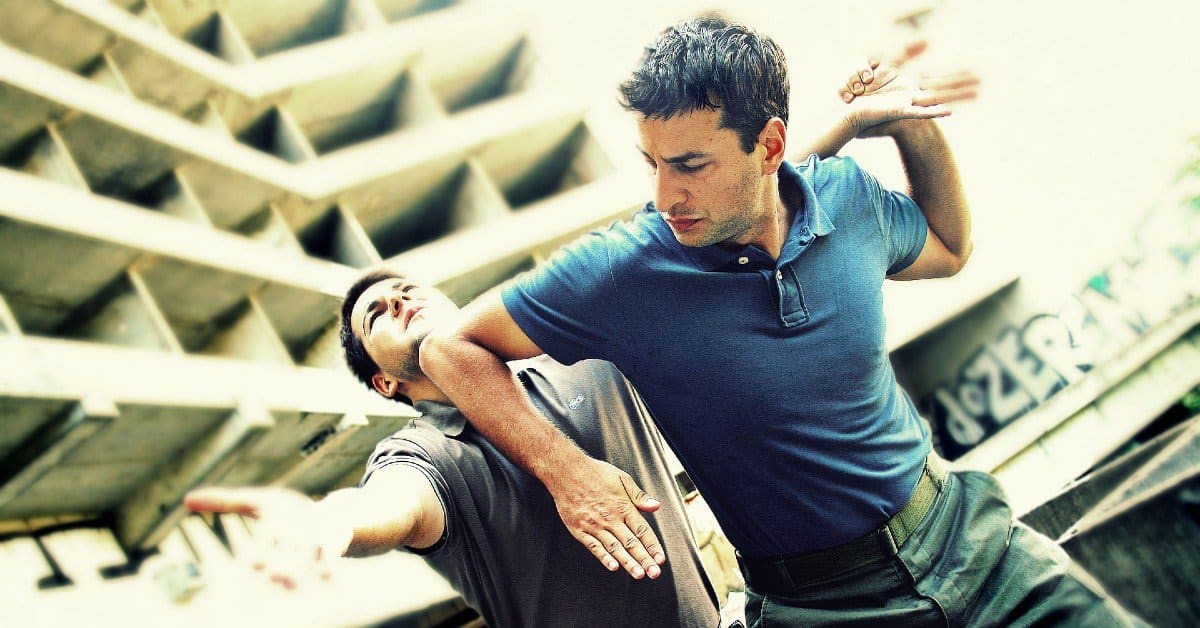Article Updated January 2024
11 Best Martial Arts for Self-Defense
Martial arts training is one of those skills that won’t only improve your fighting skills but also the best martial arts help with self-defense. Training in them will enhance your life in many areas, like discipline, physical health, and humility. As a result, we are seeing a worldwide increase in popularity to this very day for various martial arts.
A study published in the Journal of Interpersonal Violence found that women who had taken a self-defense class were less likely to experience physical or sexual assault than women who had not taken such a class.
One of the critical components of martial arts and the reason they were created is self-defense. Today, we are seeing the rise of modern martial arts competitions like the UFC or Bellator; we can now view almost all martial arts in a quasi-realistic yet still safe environment, pressure-tested. We can now easily judge martial arts on some of the following qualities:
- effectiveness,
- duration and steepness of the learning curve,
- availability of individual martial arts and combat systems
I have come up with a comprehensive list of the best martial arts for self-defense, ranked from least useful to most effective.
I should not that, while a certain martial art can be really effective, it may not be available for training everywhere, so I might have ranked it lower than some other martial art that is less effective but more accessible. In other words, if it’s hard or near impossible to find a particular combat sport training near you or most people, then it is lower down the list.
If you are interested in the topic or are trying to choose one to train, this article will help you make an educated and practical decision. It will help you choose the art that is right for you specifically and that you can use the most effectively in potential street altercations. If you are interested in learning more, read on!
You will also want to check out our article on Can You Learn Martial Arts Online? We dive into what self-defense techniques and martial arts can be learned online.
11. Taekwondo

Taekwondo is a Korean martial art founded by Choi Hong Hi and a couple of army officials and martial artists. It was developed during and after the second world war to solidify the Korean martial arts scene.
The art is based on Choi Hong Hi’s Theory of Power. This is a set of observations and theories based on rational thinking and Newtonian physics, which he used to describe a martial art that is more effective than any other.
For example, a central observation of his was that a strike’s power increases quadratically with speed and only linearly with the moving object’s mass, which made him realize that the muscle mass behind the strike isn’t as critical as speed.
This led to the development of art based mostly on kicks since our legs can deliver faster strikes and heavier ones than our arms.
Though this makes TKD unique, effective, and special, it is also what causes it to be less effective than the other arts on this list. When it comes to self-defense, a hypothetical martial art that delivers the most potent strikes known is unrealistic. A good jab is more useful in a street fight than the strongest roundhouse kick you can imagine.
Why is that? Well, there are multiple reasons. The largest of which is that you very often won’t have enough space to do kicks. I don’t only mean a wall blocking your right side off or people walking around. I also mean range-wise. Your average drunkard or mugger will not stand at a reasonable distance away from you, so you can kick them.
This will lead you to be on a constant retreat so you can evade their knife, hands, or clinch, just so you can deliver a solid kick. There are shorter and closer-range kicks in TKD, but they aren’t used frequently, and they also aren’t pressure tested in training circumstances.
Aside from the range mismatch that is very likely to occur, TKD isn’t, as mentioned, pressure tested rigorously enough. TKD competitions are about points, which results in practitioners kicking powerfully or confidently, but much rather tapping the opponent here or there with their legs to score a point.
Also, TKD relies way too much on only kicking, which is a mistake, since, in fights, you cannot rely on knowing only one thing. It can quickly get on to become a grappling or boxing match, and then all your knowledge flies out the window.
Aside from all the things making TKD a lower-effectiveness art for the street compared to many others, it is still amazing. You will still be able to defend yourself against the majority of people who you ever come across, and you will develop insane flexibility, agility, and power. But that still doesn’t mean it is as effective as many arts.
Many extremely successful martial artists like Bas Rutten or Valentina Schevchenko started by training Taekwondo, so it is an excellent basis, but it isn’t really effective on its own.
Availability is also a big reason TKD is low on the list. Though it is one of the most popular martial arts on the planet and is available in almost all major cities, the large majority of people will not be able to access proper dojos. This makes practicing martial arts harder.
10. Combat Sambo
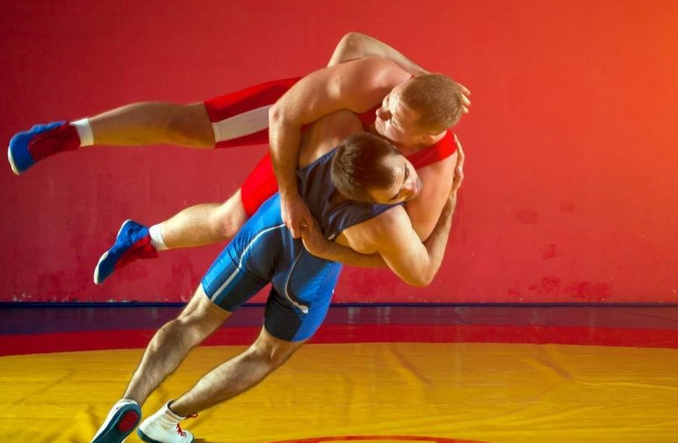
The next martial art on today’s list is Sambo. Sambo is a Russian martial art, developed around the 1920s in the USSR to improve the Russian military’s hand-to-hand combat skills. Much akin to modern MMA, it features a combination of strikes, kicks, clinches, throws, grappling, wrestling, and more.
However, there are a couple of problems with Sambo. One of the main issues is that, as very many people in the international sphere of martial arts conversation agree, it is probably not Sambo but the Russian people who make Sambo so special.
To elaborate, I will start with the obvious: one of the strongest militaries in the world, the Russian military, has Sambo as its official combat system. This already gives it an insanely good reputation. Besides that, most people training in Sambo are Russians, Kazakhstani people, or people from that general area.
Check out our article on how Sambo measures up To Judo.
Quite simply, it matters whether the martial artist is from Russia or a similar country. The country’s history has made it completely normal and almost necessary for people to be a lot tougher than people from more stable countries.
Their toughness and hardness translate into extreme discipline and determination in the gym and the ring, which is why Sambo is seen as such fantastic art. This is not to say it isn’t, it is in the top 10 after all, but it is not necessarily because of the art itself.
Sambo is somewhat like militarized MMA. It takes bits from boxing and wrestling and molds them into one art. However, it isn’t as deep in all of them as would be ideal. This is one of the things that puts Sambo so far back on the list, though it isn’t the most important reason.
The most important reason is actually surprising, and it doesn’t have much to do with the art itself, and not even with the Russian mentality debate. It has to do with availability. Out of all the martial arts on this list, Sambo is probably the worst when it comes to availability.
There are very few schools in most of the world, and the same is true for even the U.S. There are perhaps no more than a dozen or two functioning schools in the entire country, though exact numbers on this are hard to find. It is very rare to find reputable and successful schools, which makes it a terrible first option to choose.
If you were given a chance to train Combat Sambo in a Moscow training center for a couple of months or years, you would walk out of there as a person who can most surely defend themselves in a variety of scenarios, even perhaps from other martial artists. However, due to its meager availability, it falls behind many other arts on this list.
If you would like to learn Combat Sambo, or just improve your existing skills, the course I highly recommend is the one by Ivan Vasylchuk, former Sambo World Champion:
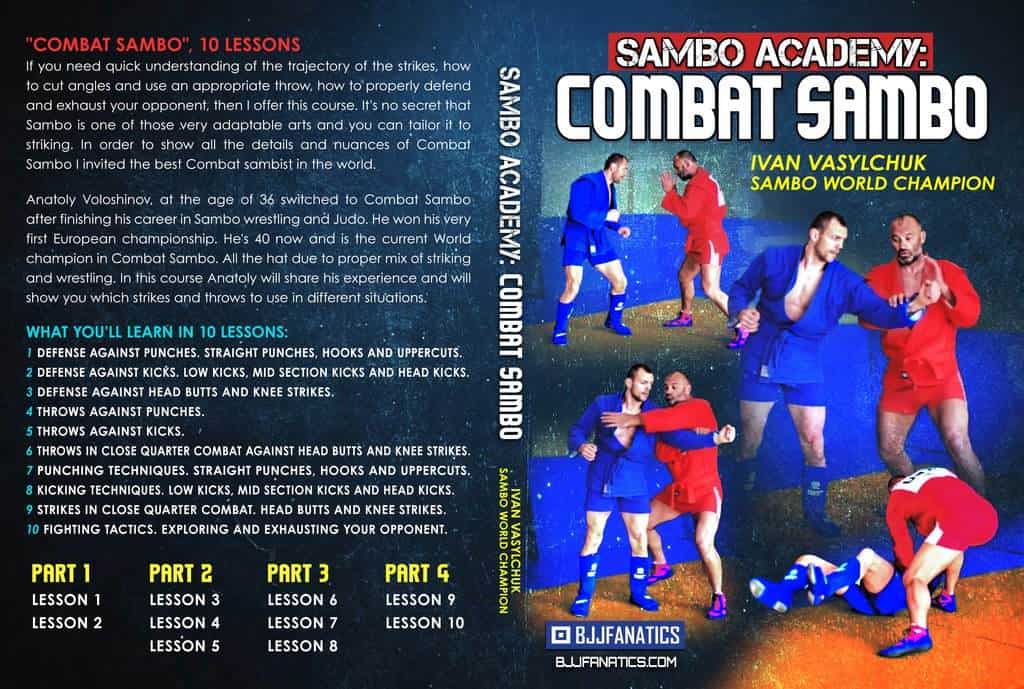
9. Karate

The next martial art on our list today is the world-famous Karate. Contrary to popular belief, it isn’t Japanese, but rather Okinawan. Though it is a part of Japan today, Okinawa was actually an independent country and is the home to most of what we now know as Japanese martial arts.
Though an extensive history of Okinawan Karate is hard to come by, it is estimated that the roots of Karate stem back thousands of years and into the Chinese kingdom and possibly the Philippines. Nevertheless, Gichin Funakoshi is considered the “founder” of the art since he pioneered the popularization and created the most popular style known today, Shotokan.
Karate is an umbrella term used to describe a large amount of smaller styles and branches, the most prominent of which are Shotokan, Goju-Ryu, Kyokushin, Shito-Ryu, and more. This is important to mention because the specific school and branch has quite a large impact on the quality of the training and its effectiveness on the street.
Shotokan Karate (Van Damme was a student of Shotokan Karate) is a very tough and effective martial art and has also evolved to try to combat Western Boxing, but it hasn’t been managed. Regardless of its general failure against most Western arts, Shotokan is still a martial art that can provide a solid basis for self-defense for anyone learning.
It is full of powerful, linear strikes, blocks, and kicks. This linear nature is also what it gets quite a lot of criticism for. It isn’t very natural and also somewhat unrealistic due to its overly formal and linear nature. Nevertheless, it is very useful if trained in a good dojo and with determination.
However, though it is the most popular branch, Shotokan isn’t the most effective Karate style for self-defense. That title is much more often accredited to Kyokushin and less frequently to Goju-Ryu.
Kyokushin Karate is viewed as the tank of all Karate styles. It isn’t fancy, and it doesn’t have very large movements, but it focuses heavily on full-contact sparring, competitions, and body conditioning, making Kyokuhshin fighters “living tanks.”
Though it is also somewhat unrealistic compared to some Western arts, Kyokushin, just like Shotokan is more than enough to defend you on the street from most people of ill will, it is far from being the most effective one out there if you want to become really good at fighting/self-defense.
One of the major reasons why Karate is so far behind on the list is quite simple: the popularity of the art gave space to a vast number of so-called McDojos, which are superficial, ineffective, and watered-down Karate schools that exist to earn money and dish out belts as if they were free.
However, if you do find a good Karate school near you, and chances are you can, do not hesitate to sign up since it will give you a great basis for fighting should you need it.
If you would like to learn Karate, or just improve your existing skills, the course I highly recommend is the one by Lyoto Machida, former UFC Light Heavyweight Champion:
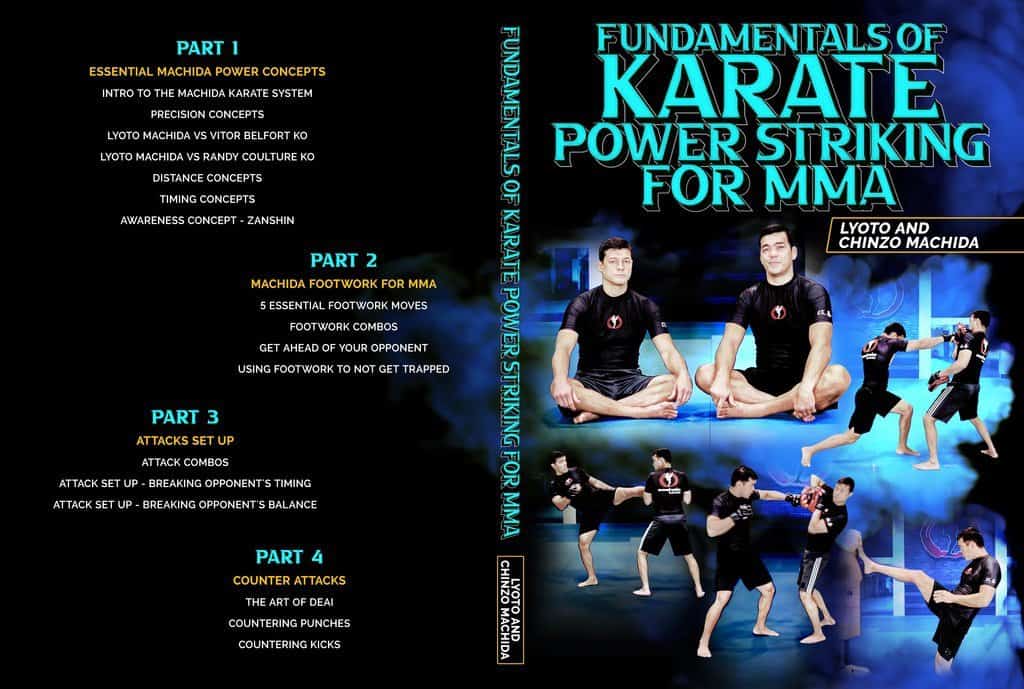
8. Judo

The next martial art on the list is Judo. It is one of the most popular martial arts in the world and been known to be the martial art of choice for a wide variety of people, whether they are MMA fighters or even the president of Russia.
Judo was developed in Japan by Jigoro Kano and is also considered to be among the first organized, official martial arts in the country. Jigoro Kano’s name is huge in the martial arts world exactly due to this. He founded and helped found many formal martial arts teaching centers and helped Judo reach international fame.
This grappling-based martial art is comprised of primarily throws, locks, sweeps, and everything that has to do with grappling. Strikes are incredibly rare and are often only used as feigns, not as actual strikes. Many tournaments ban striking since that isn’t the point of Judo.
In this uni-dimensionality lies Judo’s biggest asset and biggest mistake. Grappling is an innately human way of fighting; our arms and hands evolved to grasp and hold, not to strike, which makes it more natural. Doubling down on this aspect of humans will undoubtedly create an effective martial art, like Judo and various other arts have proven.
However, doubling down strictly on one aspect of the human fighting ability is a mistake. The lack of any type of striking makes Judo an imbalanced art, which is why it doesn’t rank any higher. In sweeping and throwing people to the floor, locking their joints, and holding them down, Judo is really near the top in the world, but that doesn’t make it the best out there.
Even though it is imbalanced, Judo will always be one of the most effective martial arts, for two specific reasons: availability and realistic effectiveness.
Judo schools can be found everywhere. In larger cities, there are usually multiple Judo schools, and even smaller and medium-sized cities tend to have training opportunities. If you choose to train Judo, it is very likely that you will find a school near you.
Under realistic effectiveness, I mean a simple idea: the opponents are resisting. Even though the combat is not balanced due to the focus on grappling, the grappling that is being done is against a fully resistant opponent, who is trying to do their best to perform the same or similar techniques on you.
This means that Judo is pressure tested and is practiced with nearly full realistic force. This type of training is the one that can prepare you to face actual attackers in real life, not point-sparring as is often the case in Karate and many other martial arts.
Judo, though it does have its faults, is highly effective since very many street fights end up becoming grappling wars. Yes, a couple of punches and kicks are thrown but in seconds, someone will close the distance and from then on, it is grappling time, in which case the Judoka will absolutely dominate in 99% of cases unless the opponent is also trained in some art.
If you would like to learn Judo, or just improve your existing skills, the course I highly recommend is the one by Jimmy Pedro and Travis Stevens:
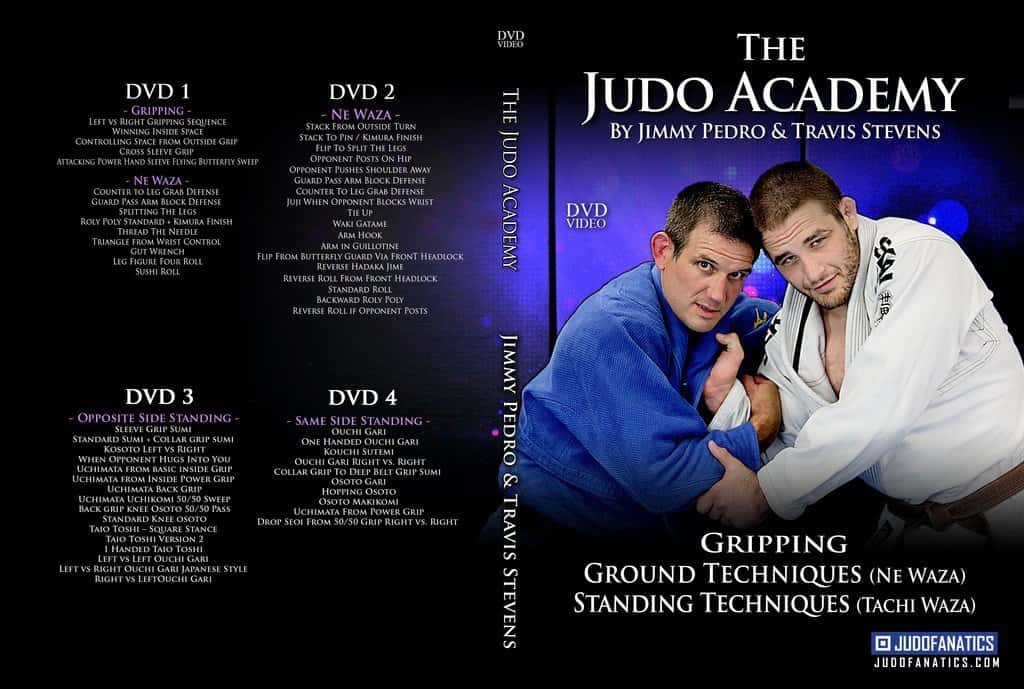
7. Boxing

Boxing deserves a high placement in any self-defense article and is often not given its due respect. Western Boxing has origins that can be traced back thousands and thousands of years to ancient civilizations, and there was never a specific moment in time when boxing became mainstream.
It is one of the most “natural” aka instinctive ways for humans to fight, as they have done for millennia. Movies like Rocky sparked immense popularity among younger people towards boxing, but it never really suffered from a lack of spectators or fighters.
Boxing, as most people know, is a punching-only martial art. Even the punching is limited to a given belt-line, which is usually somewhere around the middle-lower part of one’s abdomen.
Again, what makes boxing incredibly effective is also its major setback: it is uni-dimensional. It focuses on striking to such an incredible extent, that it creates art around it, but in the process, also forgets about all the other parts and functions of the human body.
Boxing is effective for self-defense since you learn a myriad of different skills to a very deep level, which will give you a general understanding of how fighting works and also how to knock someone out if need be.
You don’t only practice punching bags and speed bags. Much of boxing is about footwork, which is arguably one of the hardest parts of it to master. It is what enables you to keep proper range, to switch stances, to “dance around your opponent” like Muhammad Ali. This footwork will make you incredibly agile and, well, quick on your feet (wonder where that saying came from…).
Hand-eye-coordination, general fitness, cardiovascular health, and more are just a couple of the benefits you can get by training boxing, all of which can come in handy in self-defense scenarios.
Another really important aspect of boxing is that it is quite stunning. Say, you get attacked by multiple attackers. You take on the first one, since you see no other way out, and realizing that they are completely untrained, you knock the first attacker out cold or perhaps just neutralize them with a strong hook.
The rest of the attackers will definitely be more cautious in approaching you. This might not really be the case with grappling-based arts, since going to the ground might just be the last thing you want in a fight, and definitely so in multiple-attacker scenarios.
The reason boxing isn’t higher up on the list is that it doesn’t use the legs, grappling, wrestling, take-downs, ground-and-pound, or basically anything aside from striking. However useful and effective that is, it is still not the absolute best option, exactly due to its one-dimensional approach.
Nevertheless, if you train in boxing, you will be confident about your skills in 6 months to a year, and what is even better, it is probably the most widespread art in the Western world. You will struggle to find a more common art than boxing.
Learning boxing is relatively easy at the basic levels, so the learning curve isn’t too steep, at least not until the professional level, which is more than enough for you to defend yourself.
If you would like to learn the fundamentals of boxing, or just improve your existing boxing skills, the course I highly recommend is the one by Teddy Atlas, one of the greatest boxing coaches of all time:
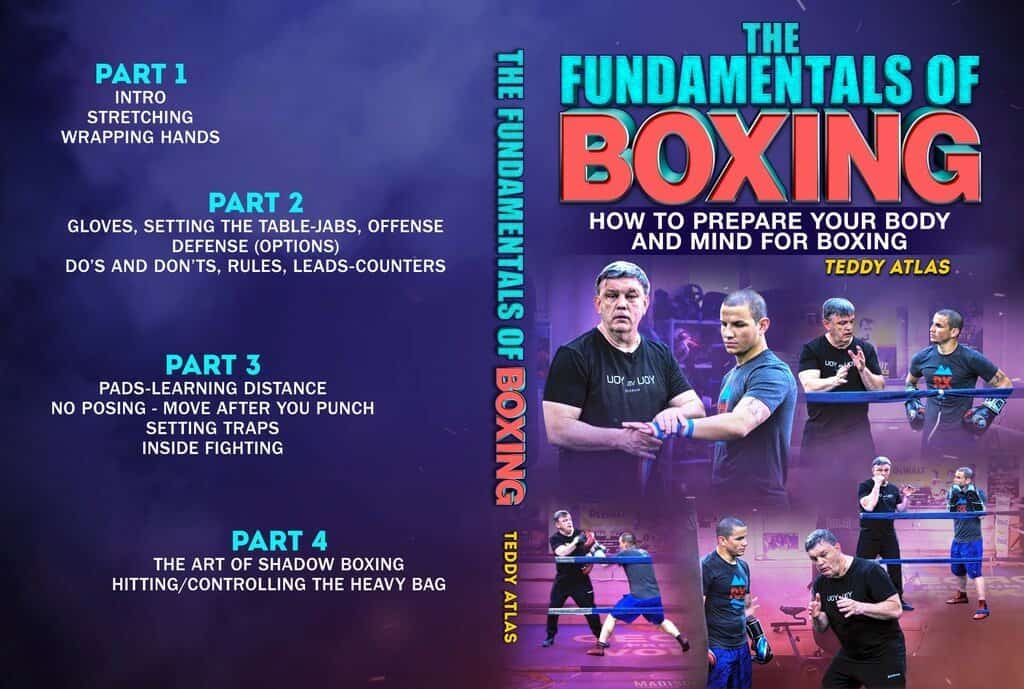
6. Wrestling
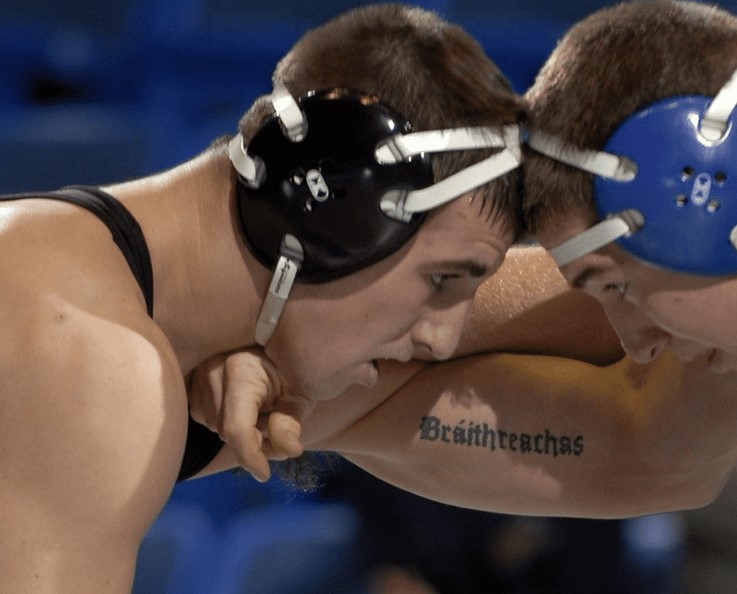
Western wrestling, often referred to as Greco-Roman Wrestling or French Wrestling, is a sport that dates back to perhaps more than 15000 years ago. It is a form of combat that has been depicted in cave drawings, suggesting that it might be as old as humans themselves.
Many very famous and successful UFC fighters have had their beginnings in wrestling, like for example Daniel Cormier, one of the best heavyweights of all time.
Wrestling, though it is a category of its own, is a grappling-based martial art that focuses on disrupting the balance of the opponent in any given way (footwork, throws, sweeps, etc.) to put them on the ground and hold them there.
What makes wrestling highly effective is the speed at which take-downs are possible. There are no strikes in wrestling, but it makes up for that with all the types of take-downs practiced in any regular wrestling gym.
In a self-defense scenario, which usually happens in places like a darker street or some bar or disco, attackers tend to try to show their “dominance” by posing up for a fistfight, by kicking or trying to knock their opponent out.
This is where wrestling comes into play. Shooting for a double-leg take-down can happen in the blink of an eye and completely catch the opponent off guard and surprise them. Aside from that, a person not trained in wrestling or other ground- and grappling-based martial arts will have no clue what to do on the ground, so you can decide what happens from then onward.
It is also a highly accessible martial art, available in most cities in the Western hemisphere, and in most schools in the U.S. as an extracurricular activity.
The one aspect of wrestling which forces it behind a couple of other martial arts is that it happens on the ground or very close to it. Though on a one-on-one situation, this is probably the easiest place to subdue an opponent for a skilled fighter, it might not be optimal in actual self-defense scenarios.
You can never know whether your attacker has some friends around, and if they do, you won’t have luck on the ground.
Nevertheless, wrestling is one of the most effective martial arts one can train for self-defense, since aside from all the practical and useful skills and techniques, it improves confidence, physical strength, and stability. All of these combined can help anyone overcome a large majority of untrained people.
If you would like to learn wrestling, or just improve your existing wrestling skills, the course I highly recommend is the one by Henry Cejudo, former Olympic Gold medalist and two-division UFC Champion:
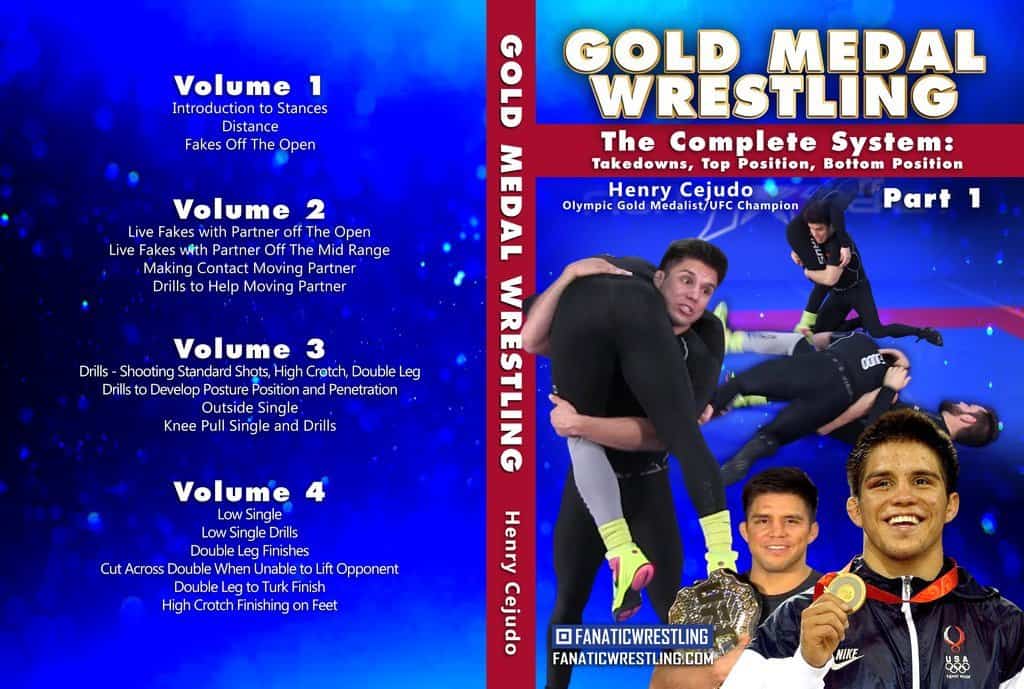
5. Muay Thai (and Kickboxing) Martial Art

The next martial art/s on the list is Muay Thai. Though there are some relatively significant differences, I consider Kickboxing to be as effective as Muay Thai and definitely in the same league, which is why all that I will write in this section represents both of these incredible martial arts.
Muay Thai, also called Thai kickboxing or Thai boxing, is a martial art with roots dating back hundreds or thousands of years. It is a traditional way of using the entire body to fight in close-quarters combat, developed by the Thai people of Thailand in Eastern Asia.
Kickboxing, also known as American Kickboxing, actually dates back to around the 1970s, as that was the time it was developed as a combination of several martial arts. It does, however, get its roots from Muay Thai, which is why it is fair to rate them similarly, and why I will consider them to be the same for the sake of the review.
Muay Thai is also called the art of 8 limbs, which represents the idea of using elbows and knees just as much as fists and feet/shins to strike. This is what makes Muay Thai so deadly and also versatile, and what gives it a really good ranking in terms of self-defense.
The conditioning of bones together with the rigorous training of the most effective striking strategies of arguably any martial art, Muay Thai is to stand-up fighting what Jiu-Jitsu is to grappling. It is the number one, undisputed striking art.
Aside from the aforementioned factors, the versatility of the art is also what makes it incredibly effective in a self-defense scenario. Be it a long roundhouse kick or a short elbow strike to the chin, or perhaps a medium-distance jab, Muay Thai has got all ranges covered.
Muay Thai also works a lot on the clinch, which is the shortest-range stand-up fighting that exists. The opponents are holding each other by their arms, head, and shoulders to try to secure some close-range elbows and knees. Muay Thai is arguably the best stand-up clinch art.
This versatility, which allows you to fight in any rage without having to resort to getting on the ground is fantastically effective. With throws also implemented, you can really develop a well-rounded understanding of self-defense in all situations.
There are two factors that stop it from reaching higher rankings on this list: availability and the learning curve.
Muay Thai, though increasing in popularity by the day, is still relatively uncommon. Every city or town has a boxing or wrestling gym, but Muay Thai gyms are quite difficult to come by.
Also, the learning curve is quite steep and difficult. There is a lot of pain and conditioning often involved with the traditional Muay Thai path, so the ones who make it to the top need a lot of determination and perseverance.
If you would like to learn the basics of striking, or just improve your existing striking skills, the course I highly recommend is the one by Anderson Silva, one of the greatest strikers in MMA history:
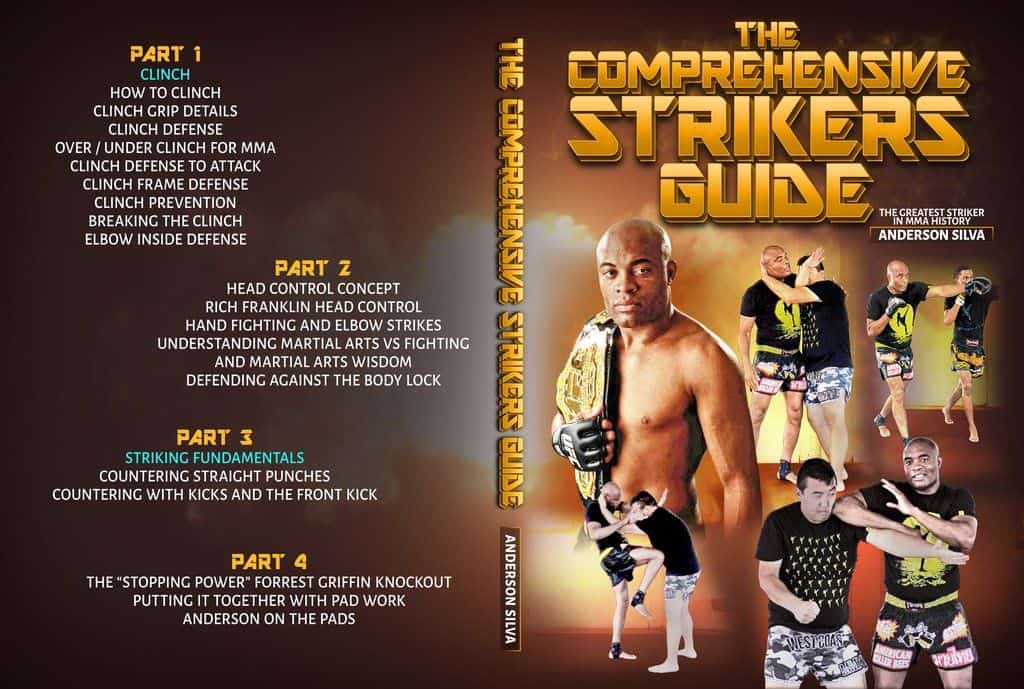
4. Jiu-Jitsu and Mixed Martial Arts
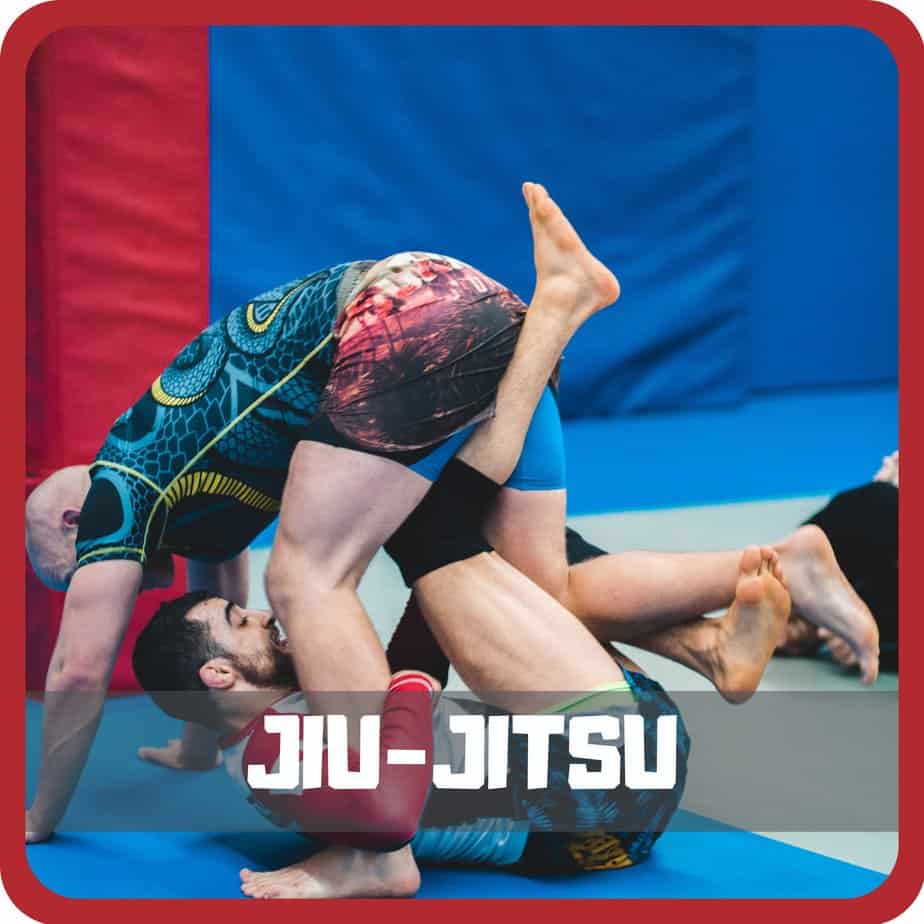
At 4th place on today’s list, we have the favorite martial arts of some of the most popular commentators and practitioners in the world of martial arts and combat sports, like Jocko WIllink and Joe Rogan. Jiu-Jitsu is arguably the martial art with the steepest rise to fame, seeing as some of the main founders have just passed away a couple of decades ago.
At the end of the 20th century, a Brazilian man by the name of Carlos Gracie met Mitsuyo Maeda, a world-renowned Judo champion and practitioner. This was the beginning of what we now know as BJJ or Jiu-Jitsu in most of the English-speaking world.
After mastering all he could from Judo, Carlos Gracie, with the help of his brothers, developed this modern art, which is the epitome of all grappling arts. It is the pinnacle of ground fighting performance and skill and is very often regarded as the best martial artist of our time.
Jiu-Jitsu is a highly effective martial art for self-defense since it doesn’t rely on chance, luck, and physical power, but much rather calculated technique and skill.
In many conversations, Joe Rogan, an advocate of Jiu-Jitsu and also one of the most popular podcasters on the planet, points out that though even the most inexperienced fighter could knock out a champion with one stray hand landing in the right place with the right power. However, on the ground, there is no element of luck to it, it is pure skill.
The only part that Jiu-Jitsu lacks is stand-up fighting, but that is made up for by the extensive emphasis placed on takedowns. Once an experienced Jiu-Jitsu practitioner gets hold of their opponent, standing up or on the ground, it is very likely game over for the opponent.
Also, in a strict self-defense context, as Jocko WIllink puts it on multiple occasions: you can run away from a boxer. Maybe you won’t outrun the person, yes, but when somebody squares off on you to fight, you can choose to move away in some way. However, once they grab a hold of you, you have nothing left but to fight your way out.
This is why he believes it should be the first art everyone should learn, since it is great with handling situations that cannot be avoided in any way, only solved through combat.
If you would like to learn the fundamentals of BJJ, the course I highly recommend is the one by Bernardo Faria, 5x Black Belt World Champion:
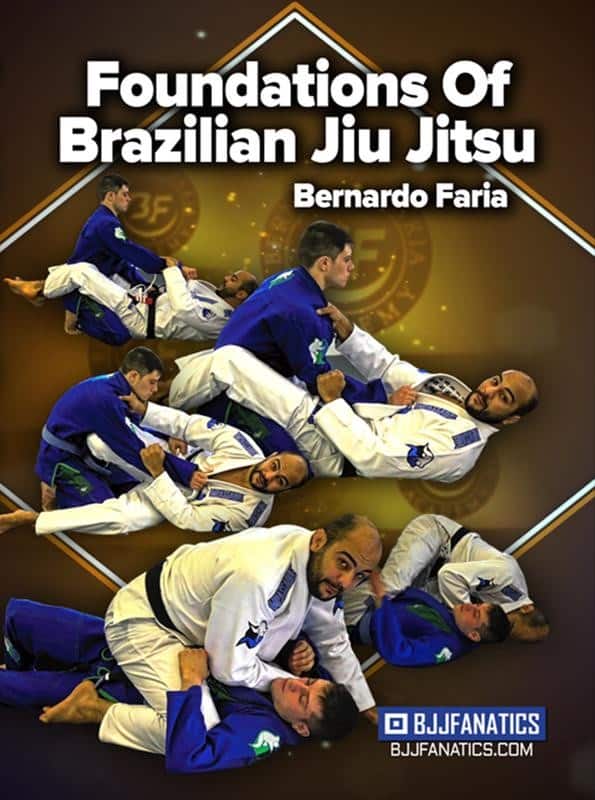
3. Krav Maga

The bronze-medal goes to Krav Maga, a military combat system designed to prepare people in the toughest of places to be able to neutralize threats as quickly and as efficiently as possible. It is also the fighting system taught to the Israeli defense forces, which is partly what gives it its good reputation.
Developed by Imi Lichtenfeld, a Hungarian martial artist living in Czechoslovakia, Krav Maga was meant to be a system that is intuitive and can help individuals survive the tough atmosphere of pre-World War Eastern Europe.
What puts Krav Maga so high on this list is, surprisingly, not the depth and expertise one can achieve with the system. Actually, the lack thereof is one of its main cons. Its intuitiveness and realistic approach to self-defense scenarios are what give it its edge.
Whichever martial art you train in like Brazilian Jiu Jitsu, you will encounter rules. No eye-poking, no groin strikes, no throat strikes, etc. Krav Maga, seeing as it was created with a life-or-death situation in mind, is the opposite. In Krav, these weak points are exactly the parts of the body that are most heavily attacked, in order to neutralize the opponent as quickly as possible.
This makes Krav Maga one of the best martial art systems to train with self-defense in mind. It is easy and intuitive to learn, with most estimates stating that around 6 months is enough for a person to feel reasonably safe in most street altercations. This won’t make someone an expert, but they won’t necessarily be in fear when walking home at night.
Also, Krav schools often focus on verbal de-escalation techniques and a bunch of other survival skills that might be used in order to avoid a physical altercation. Nevertheless, if the soft skills don’t work, a Krav Maga practitioner will certainly take care of any threat.
The only downsides to Krav Maga are that it cannot be deepened too much, and more importantly, there is no sparring. It provides a surface-level knowledge in the martial arts, which, though enough for 99% of self-defense scenarios, might not be what some individuals are looking for.
Also, the lack of pressure-testing (aka sparring) is a big issue, since it won’t prepare you for fighting with a fully resisting opponent, which can, in turn, make you falsely confident and can get you in a lot of trouble.
If you would like to learn Krav Maga, the course I highly recommend is the one by Frass Azab:
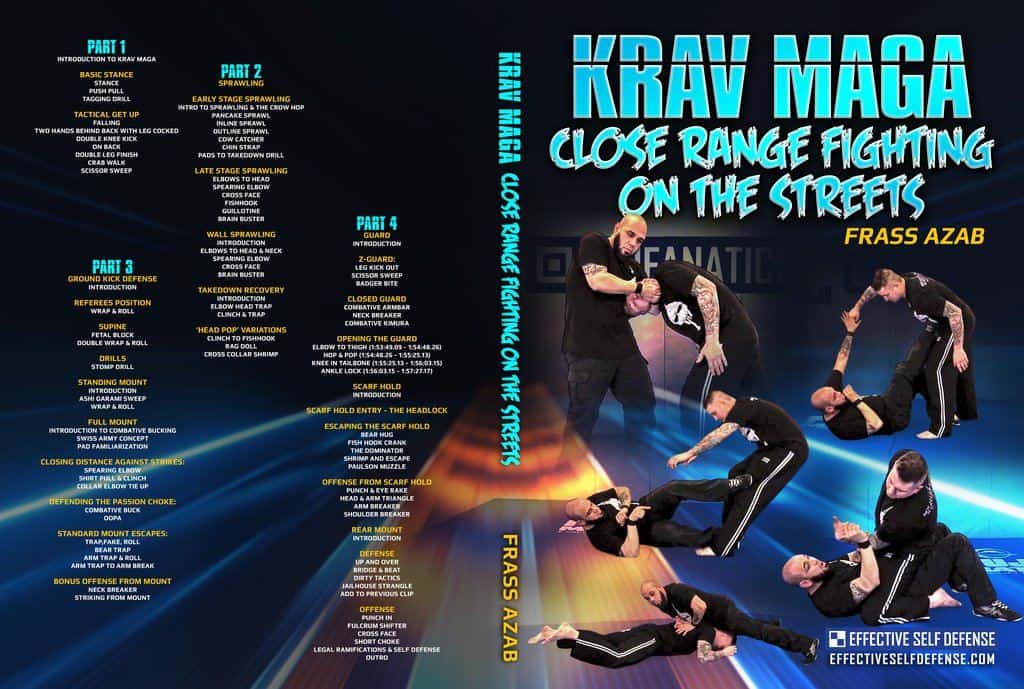
2. MMA

On our second spot is arguably the most popular martial art of our times, MMA. MMA is what gave rise to organizations like the UFC and Bellator, and is also what has proven to be the best way to pressure-test different arts.
MMA, or mixed martial arts, isn’t a singular entity. It is basically a process, within which the given individual tries their best to become the best all-around fighter. This means placing a large emphasis on striking, wrestling, grappling, and more; virtually all the areas of fighting that humans have come up with to date.
The reason why MMA is the second-best is exactly this well-roundedness. With many martial arts, like boxing or wrestling, I have even mentioned that their one drawback is their uni-dimensionality. Well, that is simply not the case with MMA, since it clearly focuses on filling all the gaps in one’s fighting knowledge.
There is literally no area in which MMA is weak. Of course, this means that an MMA fighter will not be the best in a singular area, but that isn’t even the goal of fighting for competition, and especially not for self-defense.
In self-defense scenarios, you need to know how to handle stand-up fighting and grappling as well. MMA provides the basis for a rock-solid self-defense skillset that is virtually undefeatable in the street by any singular art. If a highly skilled boxer attacks you, you get a take-down and submit them on the ground, and vice-versa. This is the strength of MMA.
MMA is also available in many places, seeing as the rise of the UFC and other competitions have had people searching for this sort of fighting practice en masse. The learning curve can be customizable and is always adapted to the individual’s needs, which makes MMA all the better.
If you would like to learn MMA for self-defense, the course I highly recommend is the one by Greg Jackson, the head coach of UFC great Jon Jones:
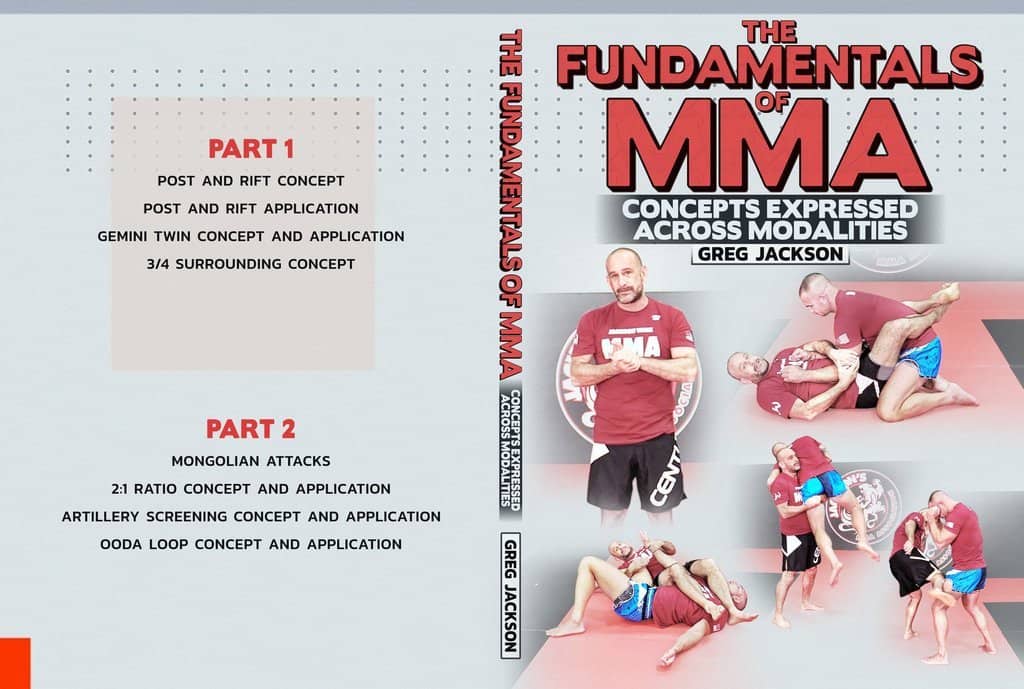
1. Krav Maga + MMA
What could possibly come after MMA, you ask? Well, combining it with Krav Maga. Though an MMA fighter will likely beat any single-discipline fighter out there, a fighter who also knows how to use illegal moves and is also an MMA fighter will be an absolute beast.
What MMA lacks, and it is the only thing it lacks, is illegal moves. In a self-defense scenario, you won’t care for the attacker’s eyeballs or groin area, your goal is to get out of there and save your life and the lives of those around you.
MMA will give you the confidence to handle almost anyone on the street, but if it really does come to a life-or-death scenario, Krav Maga might just help you out with all the moves which are illegal in MMA. This combination is hands-down the most effective one if your primary goal is to defend yourself or the people around you.
Some other martial arts worth mentioning that didn’t make the cut are Kung Fu, and Shaolin Kung Fu, both of which are excellent martial art, but which require years of training to master. Some others, like Wing Chun, don’t have a self-defense angle to it, and others may include weapons training.
What Next? What Are The Best Martial Arts for Self Defense?
Having in mind that you have searched for the best martial arts for self-defense and stumbled upon this article, I would say that you are probably considering getting into martial arts. It all depends on your personal style. Do you want to learn a single martial art or more than one? if its just one we’d suggest Krav Maga, and if you can add MMA to it or BJJ to it, then that’s even better.
That said, I have written an article about which martial art should you start with. I highly suggest you take a look at it, so you get an even deeper picture of some things that are important when choosing a martial art to start with. If you want to build strength and muscles first, you can always consider personal training.
